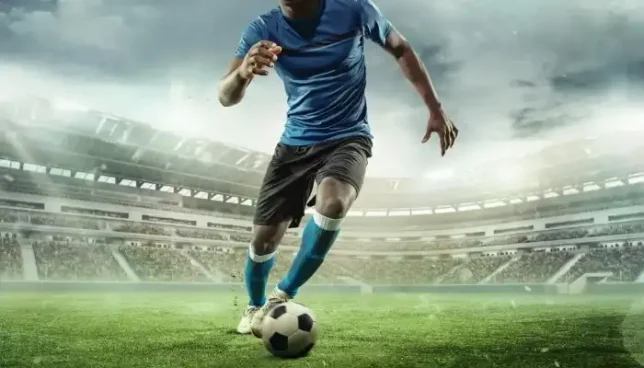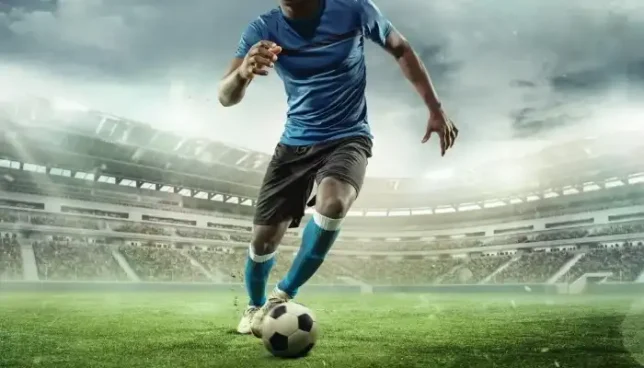Football, or soccer, as it is known in some parts of the world, is the undisputed king of sports. It has billions of fans across the globe and transcends cultures and languages to unite people with a common love for athleticism, strategy, and competition. Whether you are an experienced player looking to fine-tune your skills or a complete beginner wondering what all the fuss is about, this guide covers everything that you need to know to step onto the pitch with confidence.

The Basics of Soccer: Unveiling The Magic
Soccer at its core is a very simple game: 22 players chase after a ball, trying to score by putting it past the opponent’s goalkeeper into their net. However, this simplicity masks a complex web of rules and tactics that give soccer its captivating nature.
Essential Gear:
Before stepping onto the field, make sure you have these necessary items:
- A Soccer Ball: The heart and soul of the game; choose one that matches your skill level as well as whether it’ll be played on indoor or outdoor surfaces.
- Shin Guards: These lightweight pads protect your shins from being kicked by another player’s feet or hit by fast-moving balls.
- Proper Footwear: Choose cleats designed specifically for soccer; they provide better traction than normal shoes while also supporting movements made during play, such as pivoting quickly on grass, etc.
- Comfortable Clothing: Breathable clothes that allow freedom of movement are best suited for playing soccer since games can get intense, especially when running around in the hot sun!
Mastering The Fundamentals:
Now that we’re all geared up, let’s look at some basic skills every footballer should have:
- Dribbling: This refers to being able to control an object like a ball while moving with it using only parts of one’s own body. You must learn how to dribble both left-footed and right-footed, closely control the ball around your legs, and so on.
- Passing: The ability to accurately and effectively move a ball from one place or person to another using various parts of the foot, such as the inside, outside, toe-poke, etc. Master different types of passes, e.g., laces pass(powerful), inside of the foot pass(accurate), and chip(pass the ball over defenders’ heads).
- Shooting: This entails striking at the goal with intention; it can be done from any position on the pitch, but it primarily takes place within an eighteen-yard box area near the opponent’s net. Practice shooting techniques such as laces(powerful) and inside shots(precise).
Positions And Formations: Demystifying The Field
The soccer field is a battleground for different positions, each with its role to play. Here is an explanation of some key players and what they do:
- Goalkeeper(GK): The last line of defense whose main duty is to stop shots that come his way, as well as organize other defenders in front of him.
- Defenders(CB, LB, RB): They form what can be referred to as the ‘back four, which protects the team’s goal area from being breached by opposing attackers. There are two center backs(CBs) who cover the central part, while the left back(LB) and right back(RB) take care of the flanks, respectively.
- Midfielders(CM, DM, AM, Winger): These guys are the engine room team; they control flow game linking defense attacks. Different types of players include central midfielder(CM), defensive midfielder(DM), attacking midfielder(AM) winger(W).
- 4-3-3: An attacking formation with four defenders, three midfielders, and three forwards.
- 3-5-2: A formation that prioritizes defense with three defenders, five midfielders, and two forwards.
Locating Your Place: Selecting the Correct Position
Your best position will depend on your natural abilities and preferences. Some recommendations for choosing a role are as follows:
- Love challenges? Try out the goalie—the last line of defense.
- Consistent and reliable? Consider becoming a central defender who can control the backline.
- Creative spark? The midfield is where you can dictate play and set the game’s tempo.
- Speedy killer? Forward positions are meant to be filled by players who love scoring goals.
Establishing Technique: Mastering Ball Control
Every sport requires mastery of certain fundamentals to achieve success; soccer is no exception. Here, we explore some fundamental technical skills that every player should strive to master:
- Dribbling: This refers to being able to move with the ball using your feet while maintaining control as well as speed in different situations. Dribbling drills, for example, may include weaving in between cones, dribbling using various parts of your foot, such as laces or insteps, and changing direction quickly while still in control, among others that require agility.
- Passing: Teamwork makes dreams come true; accurate timed passes keep teams going. Practice different types of passing, such as short ones for accuracy, long ones to switch play from one side of the field to another faster, or balls-splitting defenses, among many other techniques employed by different players during matches.
- Shooting: In football, scoring goals is what counts most, so powerful shots should never lack precision either. This means developing shooting skills through proper body positioning behind the ball before hitting it hard with good technique followed by accurate aim; all these should be done using both feet from various distances as well as angles depending on where one finds oneself while having possession of the ball.
Ball control is the glue that binds these techniques together. A good first touch—the initial control of the ball after receiving a pass—is essential in setting yourself up for success in any situation on the field. Learn how to receive passes with different parts of your foot(chest control when bringing it down, thigh control for trapping bouncing balls), and smoothly transition into dribbling, passing, or shooting.
Over and Above: Tactical Awareness and Game Intelligence
Soccer goes beyond kicking around an inflatable sphere. To excel at this sport, you must become a field general capable of reading plays and making smart decisions based on:
- Understanding the game: This means anticipating what moves your opponents will make next; identifying which areas are open for attack by either team; and knowing when and where to position oneself to not only defend but also counterattack effectively, among other things. Watch professional matches closely, analyzing players’ positioning about each other as well as their reactions whenever possession changes hands, plus how best they exploit weak points within opposing formations, etc.
- Decision-making: Every single touch matters! You need the ability to judge situations quickly, then choose between the options available: taking on a defender, playing a safe pass back towards your goalkeeper, who can then distribute wide or go long over top instead, etc. This requires being able to think fast while under pressure, so accurate understanding comes with repetition and practice over time.
- Communication/teamwork: In soccer, clear communication lines must always remain open between teammates, since it’s known that no player ever wins alone but rather through joint efforts worked out by both sides. Communicate using the universal language of football, which includes hand signals, body language, and vocal cues. This will facilitate easy coordination during play, leading to numerous scoring opportunities through effective tactical maneuvers on the pitch.
Giving Your All: Fitness and Nutrition
Soccer is highly demanding on one’s physical fitness, hence the need for a holistic approach.
- Main Fitness Components: Emphasize building up stamina levels; enhance speed aspects such as sprinting over short distances(10–20 m); agility training involving quick changes in direction combined with balance control skill development; power workouts featuring explosive movements like jumping or kicking off from both legs simultaneously, etc. Incorporate running exercises where necessary that target various muscle groups in the body while also working on specific areas required most by players who participate in football.
- Cardiovascular Endurance: The ability to keep going for a long time at a high level is important to last the entire game. Therefore, run exercises such as long-distance jogging, sprints, and suicides, which will develop your stamina.
- Strength and Power: Having strong leg and core muscles is what gives you explosiveness on the field. In other words, when shooting, sprinting, or jumping, you need strength-training exercises like squats, lunges, and core work that help generate power.
Nutrition has a significant impact on fitness goals and performance on the field.
- Balanced Diet: Eat whole foods such as fruits, vegetables, lean protein sources, and complex carbohydrates so that your body gets enough energy along with all the required nutrients.
- Hydration: Staying hydrated helps to maintain performance levels and prevent injuries. For instance, drink lots of water throughout the day, especially before, during, and after training sessions.
- Recovery: After exercise, it is essential to allow muscles to recover properly by eating foods rich in protein while also ensuring enough sleep, which gives the body time to rest and repair itself properly.
The Power of the Mind: Mental Toughness and Focus
Soccer is not only a physical but also a mental game, whereby having a strong mentality enables one to perform best under pressure.
- Building Confidence: Believe in yourself; visualize success and concentrate on strengths; celebrate achievements, both major and minor.
- Staying Focused: Learn how to block out distractions during games while keeping your mind on task; use the deep breathing method for managing pre-game nerves.
- Goal Setting and Visualization: Set specific targets, then imagine achieving them; picture oneself making a perfect pass, scoring a winning goal, successfully defending the opponent, etc.
Advancing Your Game: Beyond the Basics
After mastering the basics, experiment with advanced skills and tactical strategies.
- Set Pieces: Know how to take good free kicks and corner throws, because these can change games if done right.
- Tactical Awareness: Be familiar with different formations and styles; anticipate your opponent’s moves; and adjust your position accordingly.
- Joining Leagues or Clubs: Participation in league matches or joining clubs gives one exposure, thus enabling him/her to face stiff competition from players of similar ability levels, which fosters team spirit, communication skills, and game intelligence.
Conclusion
Remember that becoming an excellent soccer player is a continuous process. Therefore, embrace the challenge, maintain discipline in training, and keep learning new things. So work hard, love what you do, and follow the instructions given here; success will be yours!
We invite everyone who reads this post to implement these suggestions into their life and share feedback through the comments section below. Let’s continue discussing how we can help each other become better soccer players!

